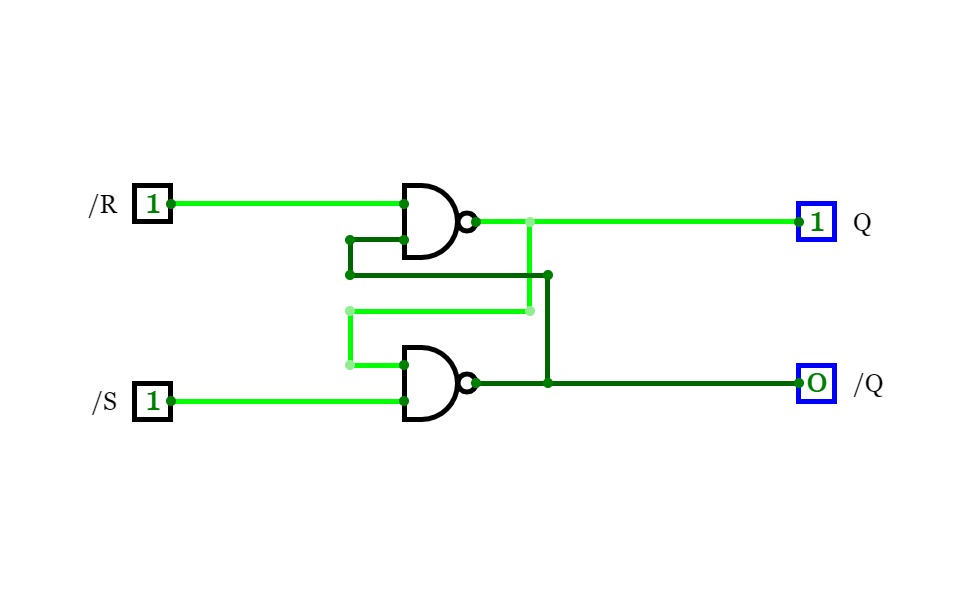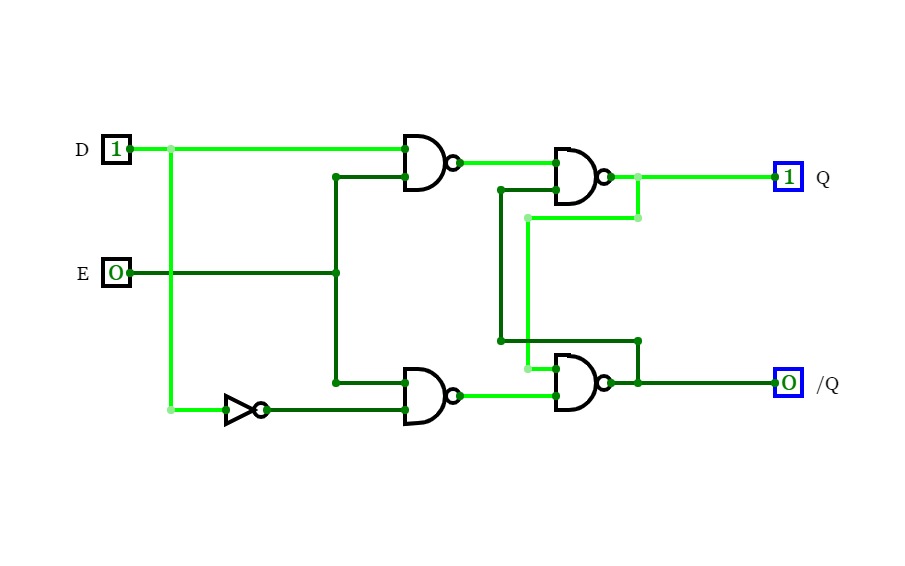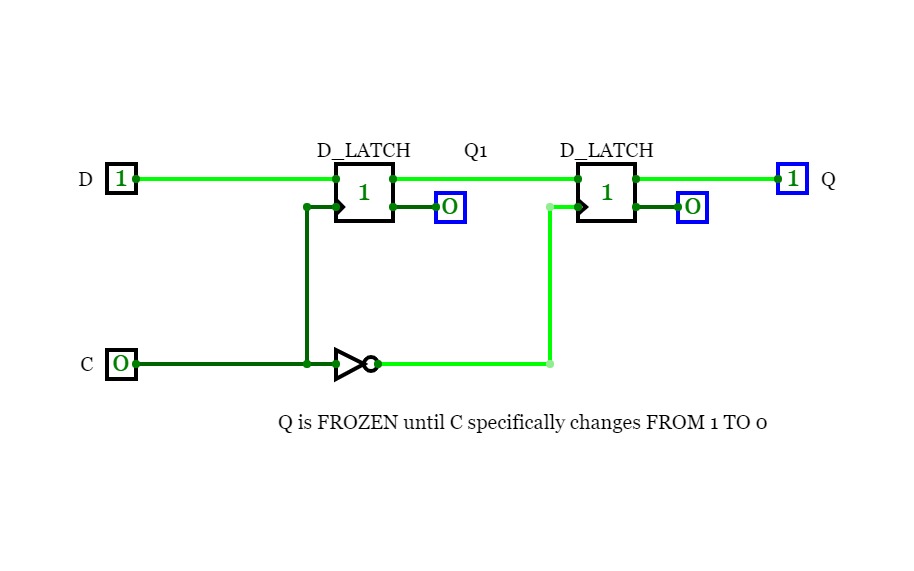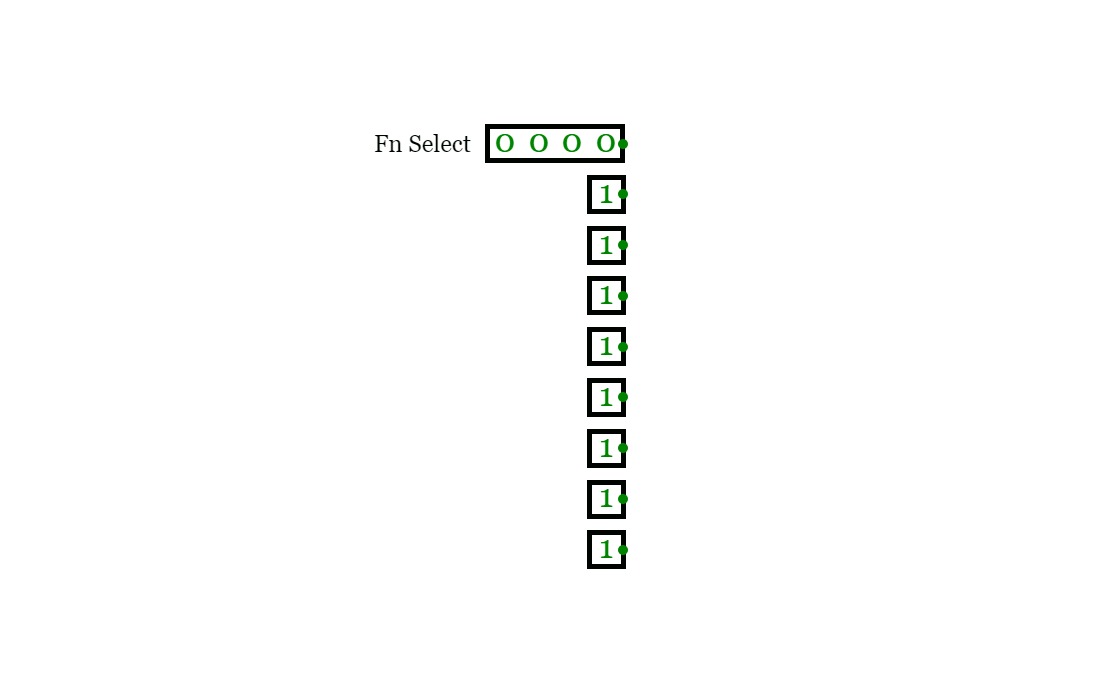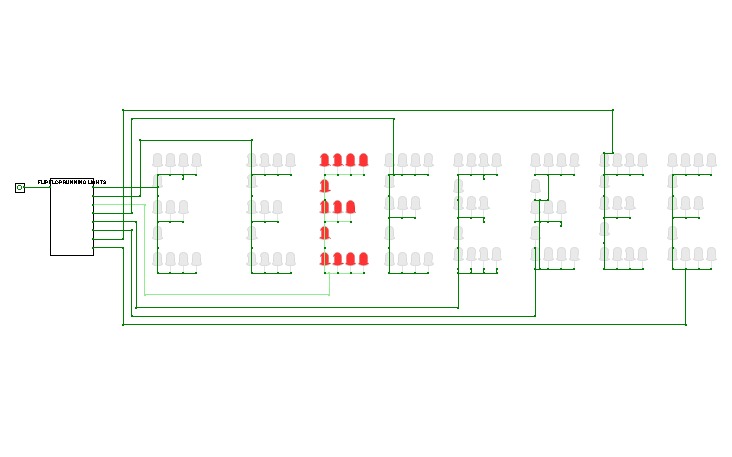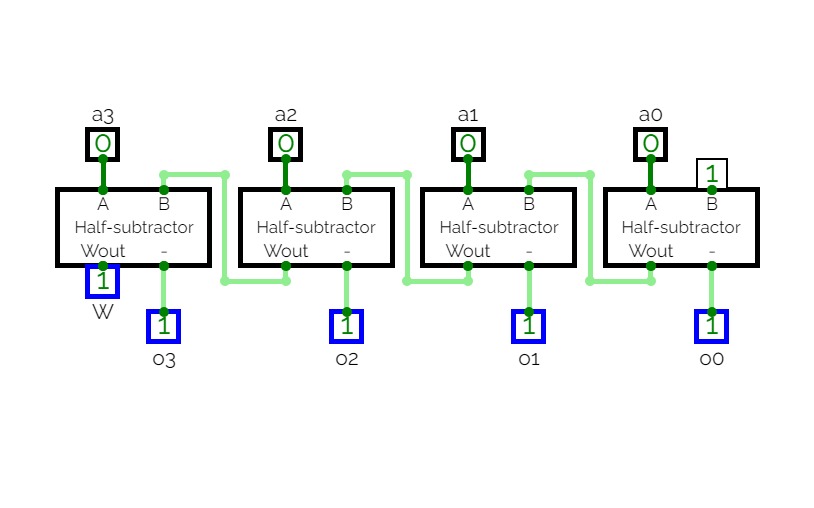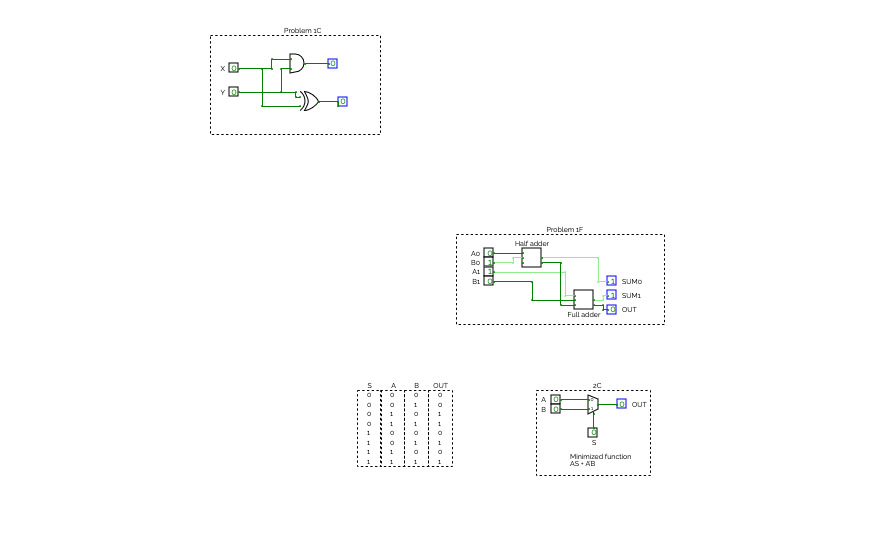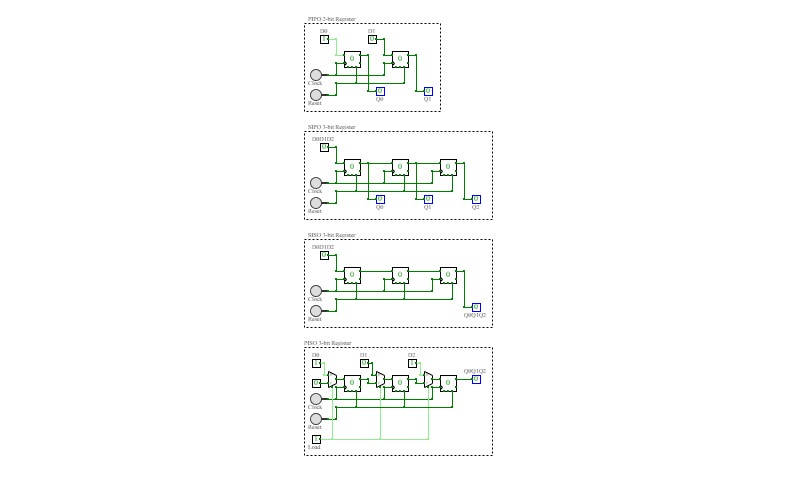JK Flip Flop
JK Flip FlopExperiment No. 9 b: Implementation of flip flops: JK.
Done by:
Saranga K. Mahanta
Sch Id:18-14-038
T Flip Flop
T Flip FlopExperiment No 9 d: Implementation of flip flops: SR, JK, D and T
Done by:
Saranga K. Mahanta
Sch Id: 18-14-038
D Flip Flop
D Flip FlopExperiment No. 9 c: Implementation of flip flops: D flip flop.
Done by:
Saranga K. Mahanta
Scholar Id: 18-14-038
Decade Counter
Decade CounterExperiment No 10: Implement a decade counter using basic gates.
Done by:
Saranga K. Mahanta
Scholar Id: 18-14-038
D FF using MUX
D FF using MUXExperiment No 11 c: D flip flop using 2x1 MUXs.
Done by:
Saranga K. Mahanta
Schl Id: 18-14-038
[Sequential] RS Latch
[Sequential] RS LatchThe RS Latch is the first sequential circuit we learned. It 'remembers' which input (/R or /S) was last set to ZERO by outputting on either Q or /Q.
/R = 0 and /S = 0 is an illegal state!
[Sequential] D Latch (Transparent Latch)
[Sequential] D Latch (Transparent Latch)Similar to a gated RS Latch, but Q is set to D when E is 1
[Sequential] D Flip Flop (Edge Triggered)
[Sequential] D Flip Flop (Edge Triggered)The output Q can only change at the point in time when C (clock) transitions from high to low (1 -> 0)
We say "Q changes on the falling / trailing edge of C"
My Processor Design
My Processor DesignA basic ALU design for my personal projects.
RUnning lights
RUnning lightsRunning lights, Sequential
Tests
Testsbasic D latch
Lab 05
Lab 05Shift Register
Shift RegisterThese contain the D flip-flop Shift Register with all mode of Serial and Parallel Input/Output. It also contain the synchronous and acsynchronous clock.

